Sunny tropical days, lazy island nights. Indescribable scenic beauty and five-star luxury. It’s no wonder the Maldives rank so highly as a dream destination.
If you’ve ever flown high above a vast ocean, you probably looked out the window once, took in the featureless expanse of deep blue, then pulled the window shade back down. But if you’re flying across the Indian Ocean with the Maldives as your destination, it’s a good idea to raise that shade towards the end of the flight.
As our direct AirAsia flight descended for its approach to Malé, I glanced down to see that same flat stretch of dark blue ocean, but now splashed with dozens of almost iridescent turquoise spots, brightly coloured splotches of beauty and wonder. These were the coral-fringed atolls and islands of the Maldives, a nation that has made it onto the bucket lists of countless travellers.
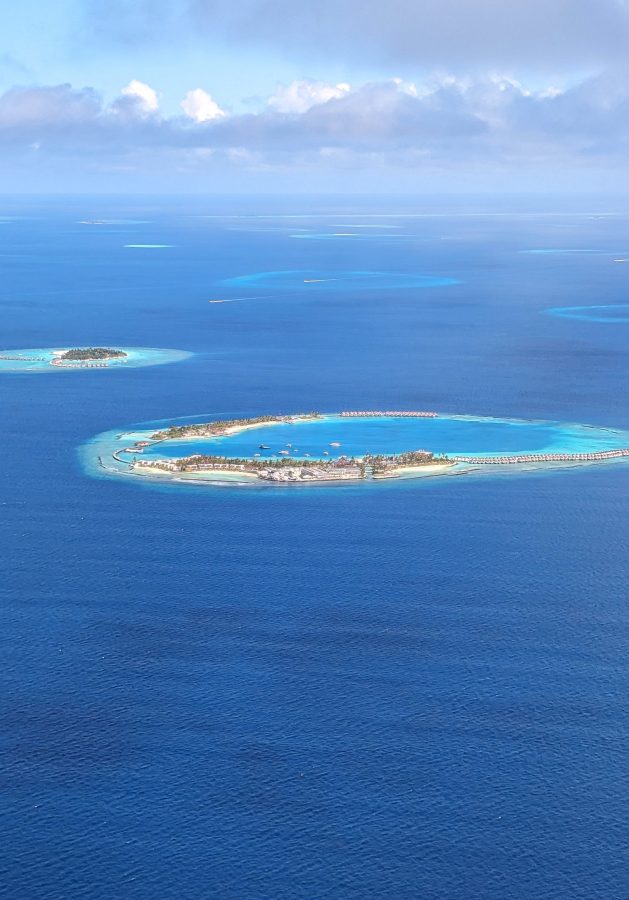
Malé is a unique capital city which technically comprises six islands and holds more than a third of the country’s entire population of 520,000. The landmass of Malé’s central island is impossibly built-up, and stands as one of the most densely populated cities in the world – an island city that can be crossed on foot in just 20 minutes, yet is home to over 200,000 people.
The airport, Velana International, is actually on a different island, Hulhulé, connected to the central island by a 1.4-km bridge which opened in late 2018. We never actually went to the main island of Malé, as so many visitors are obliged to do since their flights arrive late and their seaplane transfer to their resort island of choice only departs the next morning. We were staying at the new SO/ Maldives resort, which is on an island just 15 minutes away from the airport by speedboat, undoubtedly one of the five-star property’s key selling points.
Because AirAsia’s flight left Kuala Lumpur at 8.30am, the time difference meant that we arrived in the Maldives around 9.30am local time, thus giving us the entire day to kick off our indulgent stay. We sped through immigration and baggage claim and headed to the resort’s lounge by the docks, already stunned by the brilliant turquoise waters we could see. I can’t even report much about the waiting lounge, because we were there for less than three minutes before the staff came in to tell us our boat was ready to board. We sped across the sea in comfort – complete with Wi-Fi onboard – and arrived at the welcome pier of the resort minutes later.
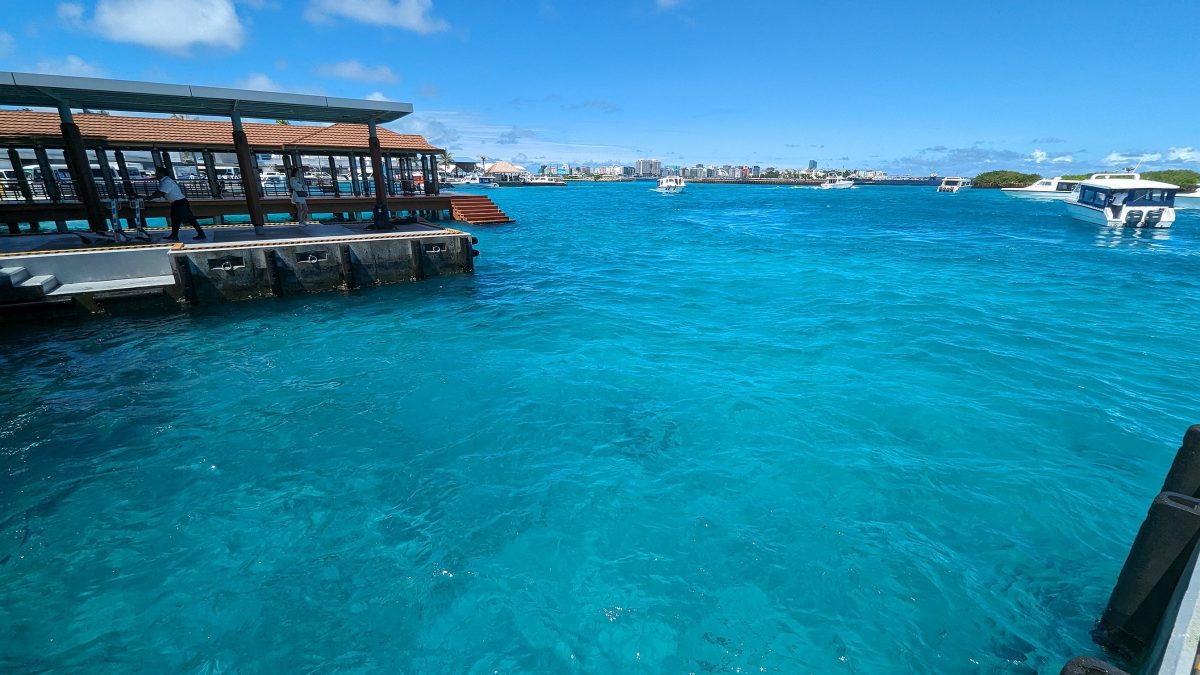
We were perhaps fortunate to get through immigration so quickly as our front-of-cabin seats enabled us to get off the plane first, but the general sense is that the counters were very efficient and handle the arrivals of planeloads of tourists quite rapidly anyway. It’s not at all a stretch to say that guests of SO/ Maldives can literally be relaxing in their villa in just an hour or so after landing in Malé. For us, it was – incredibly – about 45 minutes.
CHAMPAGNE WISHES, CAVIAR DREAMS
A holiday in the Maldives is, for many people, an aspirational one – a dream destination. They’ve seen the photos; they’ve heard the stories. And if you’ve been told that this is a costly place to visit, well, you haven’t been misled. However, though it will still not be a budget vacation, there are a number of ways to moderate the expense – more on that later.
Many properties in the Maldives embrace the ‘one island, one resort’ concept, either by design or by necessity. The country consists of nearly 1,200 coral islands grouped in a double chain of 26 atolls. The vast majority of these islands are uninhabited and undeveloped, with only 188 of them home to human settlements, most comprising just a few hundred residents. As the atolls of the Maldives are sprinkled across a 90,000-sq km expanse of ocean, boats and seaplanes are the primary forms of transportation.
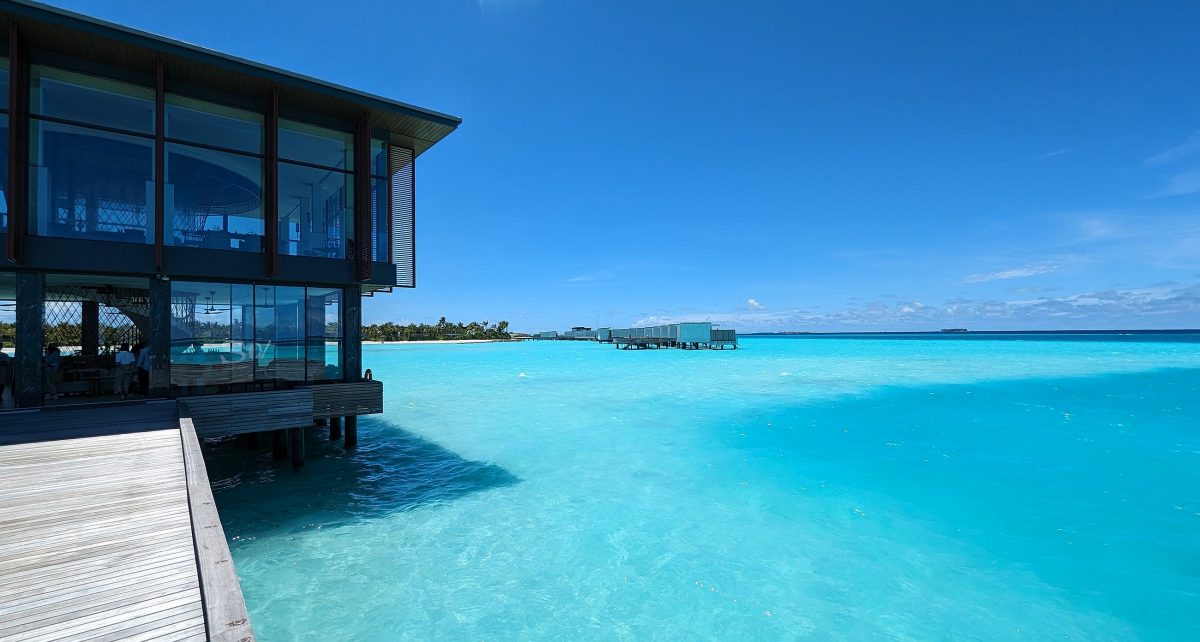
Despite the obvious logistical challenges, however, there are still over 160 resorts from which to choose, ranging from the merely semi-expensive to the outrageously decadent. Moreover, these resort islands exist in their own bubble, almost completely divorced from Maldivian culture – and realistically, from their broader South Asian location, as well. Ensconced in one of these luxurious resorts, cocooned away from not only the actual country of the Maldives, but in many ways from reality itself – and isn’t that the ideal holiday? – visitors could be forgiven for forgetting exactly where on the planet they’re located. While there, you’ll experience virtually nothing beyond sea, sun, and sand. If you’re so inclined, the rest of the world will, for a short time, simply cease to exist for you.
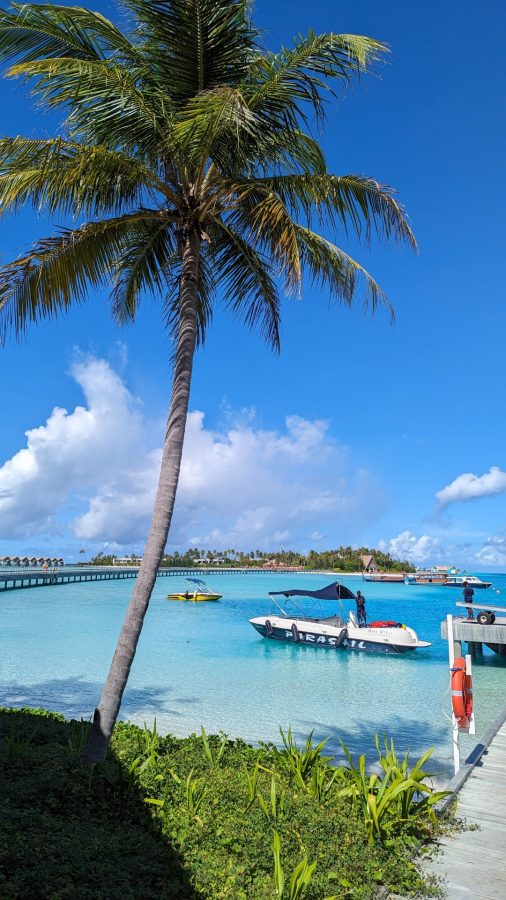
The resort we stayed at is on an artificial island, one of a growing number that have been created in the Maldives since the early 1990s. This particular island – really a cluster of several islets set in something of a ring around the Emboodhoo Lagoon – is home to two other resorts besides SO/ Maldives, as well as the popular Crossroads recreational development.
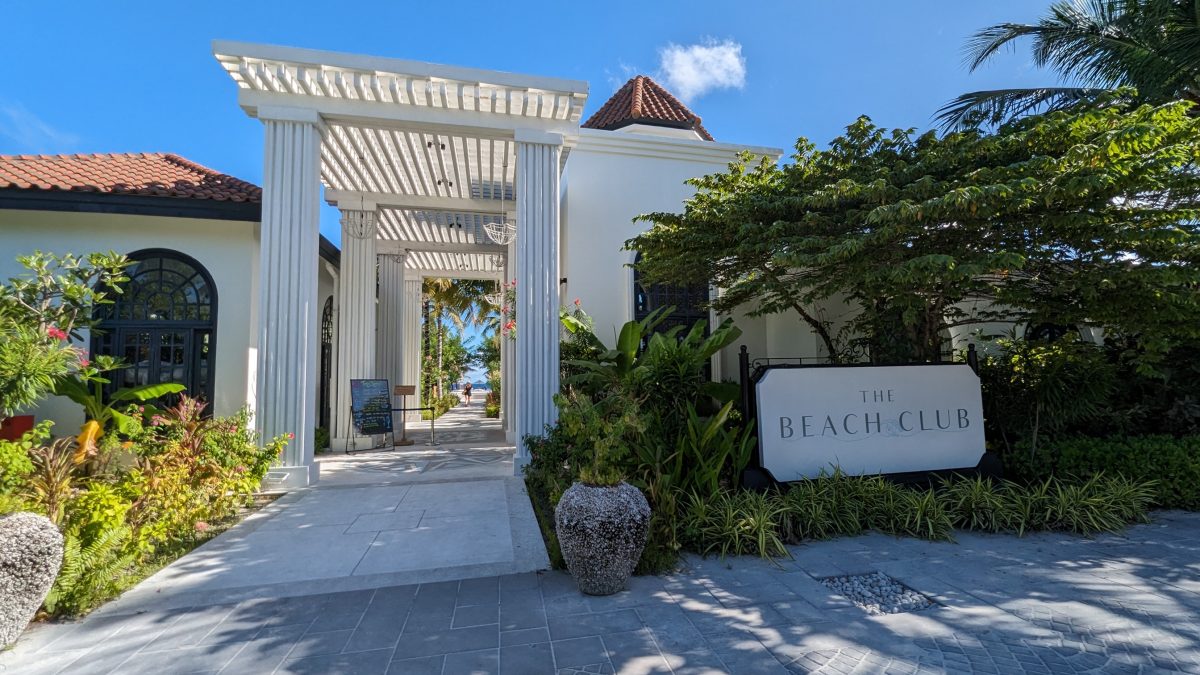
Though there are three resorts located in our immediate area (SAii Lagoon, Hard Rock Hotel, and SO/ Maldives), visitors cannot simply walk from one to another, as they are actually separated by small stretches of sea. We had to take a short boat ride – about five minutes – to get to Crossroads, an integrated tourist destination comprising not only the three resorts, but a 30-berth marina, beach club, shopping and dining options, and a number of excursions and activities on offer. Well-known restaurants here include Ministry of Crab, Nihonbashi Blue, and a Hard Rock Café.
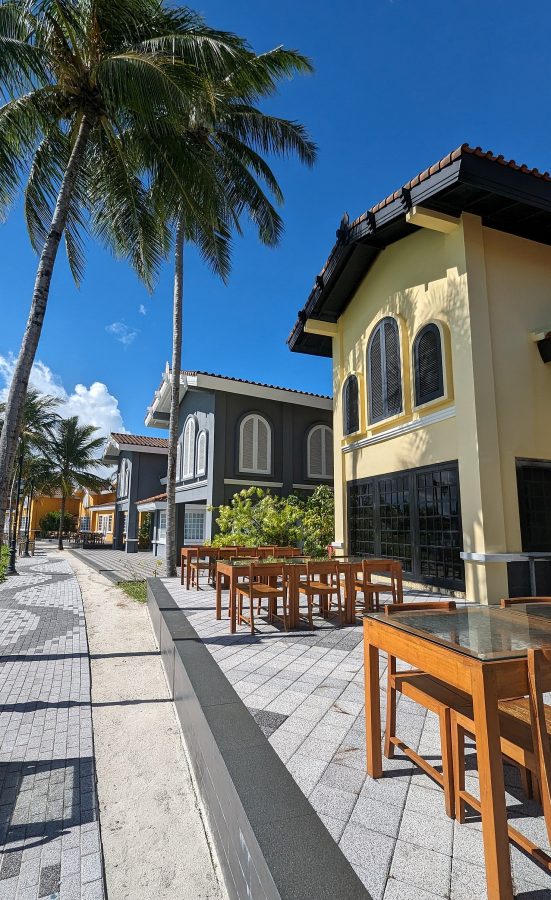
The brand-new SO/ Maldives is positioned as the highest-end resort at Crossroads, with 80 private villas. Some are on the beach, some are overwater, and all have a private pool. We opted for a beach villa since it’s a little larger and we liked the idea of having direct access to the beach and lagoon.
Everything at the resort communicates tropical style and contemporary, breezy luxury. It’s not at all pretentious, but it’s all just so nice. The furnishings and amenities in the villas, the lovely restaurants, the top-notch service, and of course that sparkling clear lagoon reflecting a surreal, radiant blue. Every time you look up from your breakfast, or gaze out from your villa’s pool deck, or ride your bicycle along the boardwalk, you feel that you’re holidaying inside a postcard.
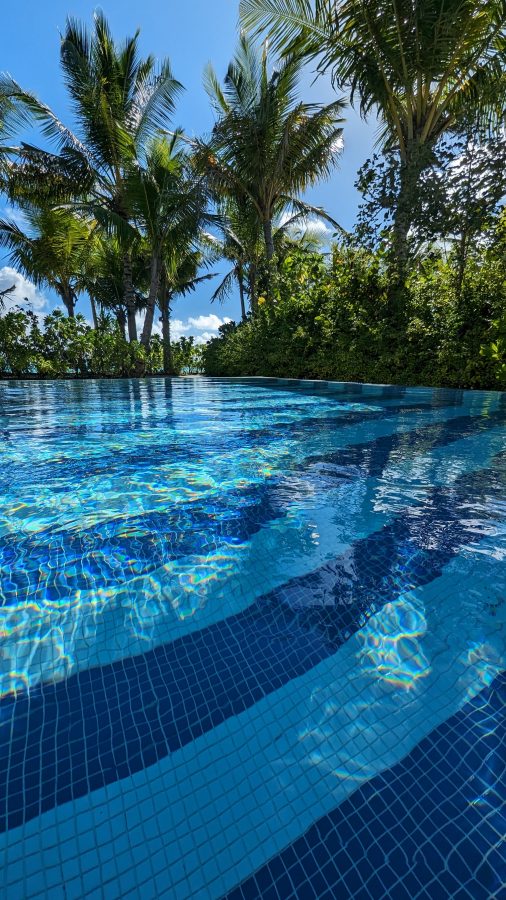
SETTING A HIGH STANDARD
But although the natural beauty of the Maldives genuinely is next level, there are other places in the region where tourists can go to experience brilliant blue oceanic eye candy. There are gorgeous places in the Philippines, Indonesia, even here in East Malaysia. So what is it that makes the Maldives so special?
I think one difference is that the water that surrounds almost every resort is not only supremely beautiful and clean, it’s also very shallow. The water depth in Emboodhoo Lagoon was rarely more than a meter or so. And, at least at our resort, the stunning scenery is augmented by the impeccable facilities and service that, for us, was genuinely a delight. Not just by-the-book good service, mind you, but personable, enjoyable service, delivered by team members who seem to actually enjoy what they do.
We thoroughly enjoyed the care of three regular staff members during the bubbly breakfast each morning at the resort’s appealing Citronelle Club restaurant. Luna, a lovely young lady from Bali, couldn’t have been any more amiable and gracious, and always had a genuine, infectious smile on her face. Two of the local guys, meanwhile, Malaz and Amir, consistently charmed us with both their cheekiness and confident, friendly service. They were brimming with personality and exceeded our expectations at every turn.
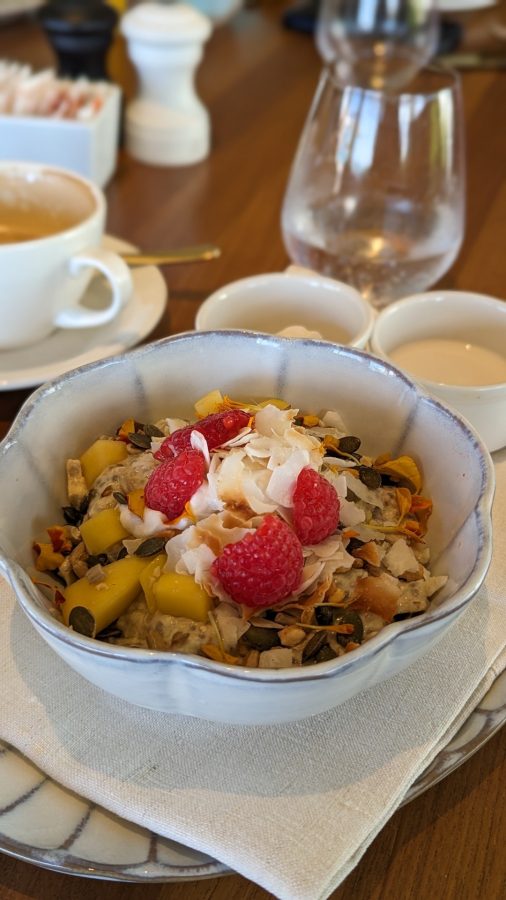
And speaking of exceeding expectations, the food at SO/ Maldives was outstanding. We had meals at all the outlets, from Hadaba with its Arabian and Levantine cuisine and stellar ocean views to the casual Lazuli Beach Club, with a Mediterranean-centred menu and beautiful bar (and a brick oven that turned out some fabulous pizzas, too). We even had a beachside BBQ buffet one evening, and really indulged with an excellent wine tasting experience on the beach, guided by a bona fide expert who boated over from Malé – another benefit of being so nearby!
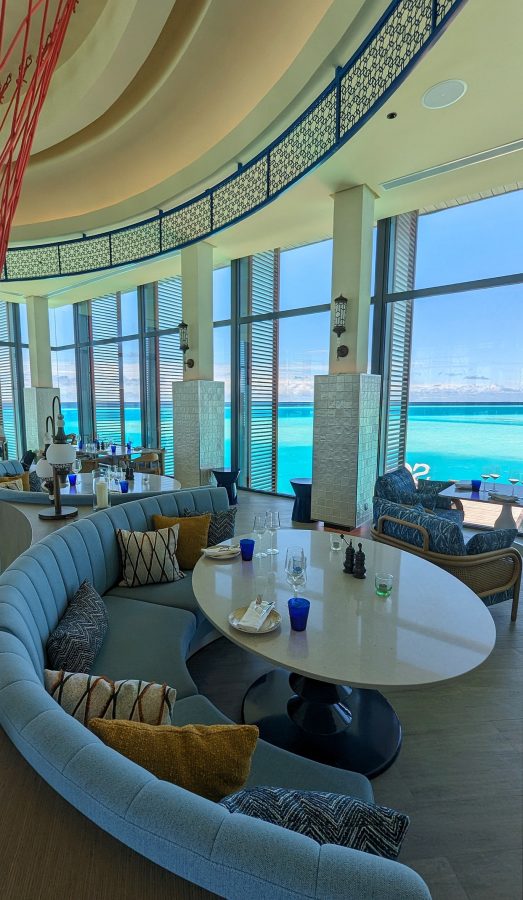
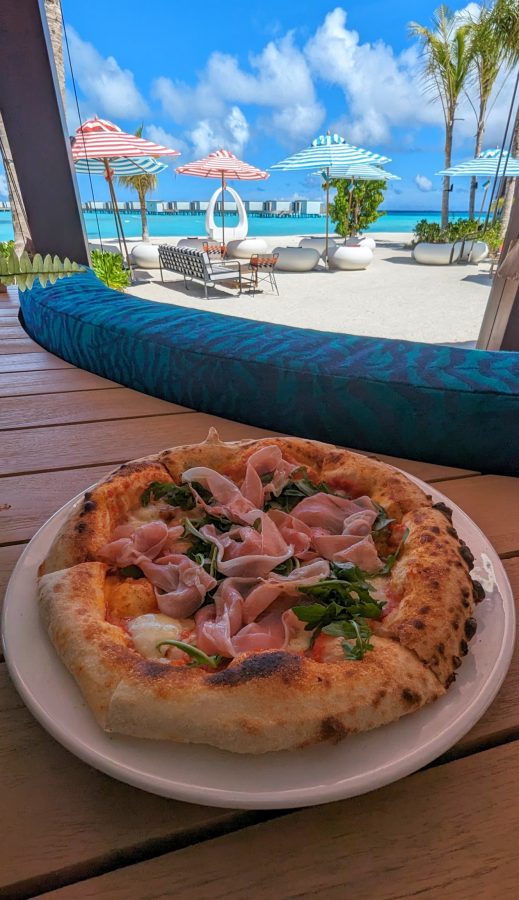
Beyond the excursions, meals, and various activities, though, one of the most enjoyable things at the resort was just relaxing and letting that leisurely holiday vibe slowly seep in as one lazy tropical day languidly segued into the next. Admittedly, for many of us, it takes a little time to really decompress and slow down. But on a quiet island in the Maldives, it’s bound to happen. We found great pleasure in lying by the pool, reading a book, sipping on cocktails. At other times, unhurried bike rides to and fro on the tiny island were a delightful throwback to childhood, when a bike was our only mode of transportation.
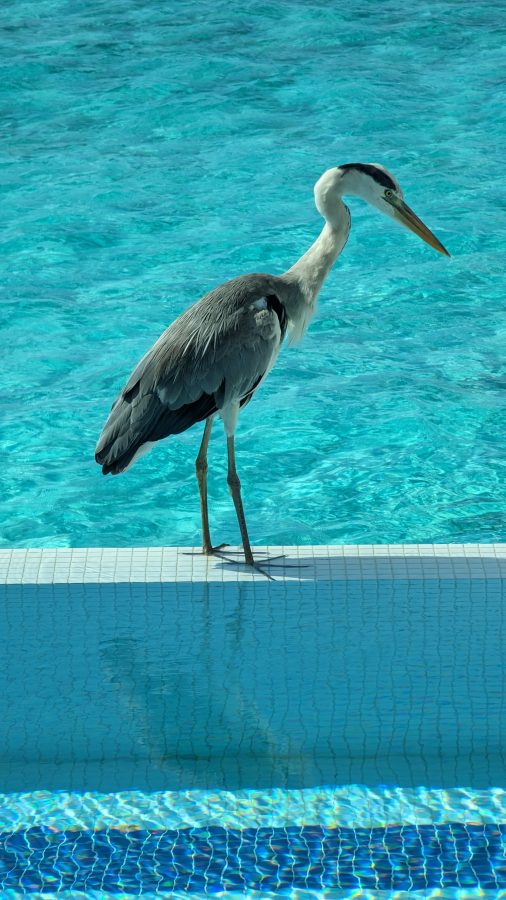
We observed the indigenous wildlife – grey herons, nurse sharks, baby blacktip reef sharks, schools of tuna, and playful spinner dolphins spied en masse on a champagne-soaked boat excursion late one afternoon. Was it super-touristy and maybe even a bit cliché to go on a dolphin-spotting cruise and enjoy plenty of bubbly along the way? Absolutely. But it’s hard to say it wasn’t a lot of fun, too.
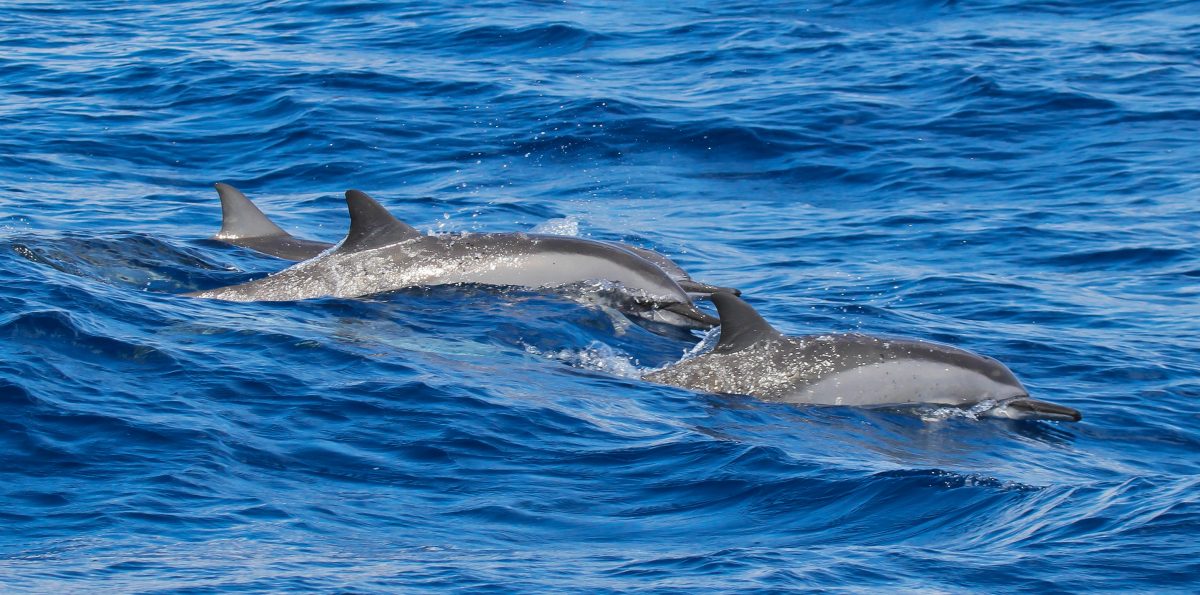
PARADISE AT RISK
The little cluster of manmade islands that are home to Crossroads and SO/ Maldives are part a small reclamation trend emerging in the Maldives for two reasons. One is for resorts to be closer to the airport. For visitors who’d prefer to not spend precious hours of their holiday trying to get from Malé to their resort, even routinely requiring an unwanted overnight stay in the capital city, a resort that’s relatively close to the airport has real appeal. The other reason is simply that artificial islands can be created to rise a bit higher than the surrounding ocean.
It’s a cruel irony that the same beautiful, crystal-clear waters, shimmering in an alluring palette of blue and turquoise hues that draws in tourists by the planeload, also pose an existential threat to the Maldives and its population. One by one, many of the country’s coral-fringed islands will be inexorably consumed by the sea within another couple of generations.
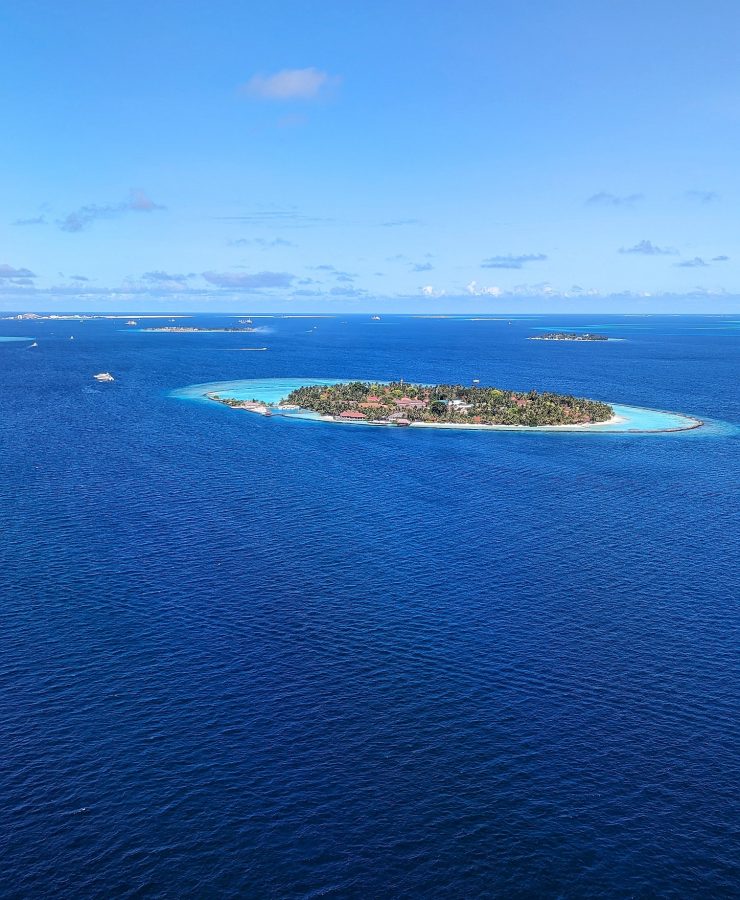
Most of the Maldives’ natural islands are incredibly low-lying, some not even a meter above sea level, and scientists agree that even with the current rate of sea level rise, much of the country will be uninhabitable in the coming decades. As the impact from global climate change becomes increasingly pronounced, it is widely expected that the Maldives will be largely submerged by 2100, particularly without aggressive intervention. While mitigation is taking several forms – from laying sandbags and building coastal barriers to planning for mass relocations – it just makes sense when creating any new islands to make them a bit higher, buying their very existence a little more time.
For now, action taken by both citizens and the resorts that provide so much of the country’s income can perhaps help delay the inevitable. Places like SO/ Maldives invest heavily in sustainability, not just because it’s a good approach for business, but because it’s vital to their survival. At this resort, there are no single-use plastics to be found. (Indeed, it is a fully certified ‘zero single-use plastic’ resort.) An impressive 45% of the resort’s energy is generated by solar panels atop the villas and other buildings, and they are aiming to increase that percentage even more.
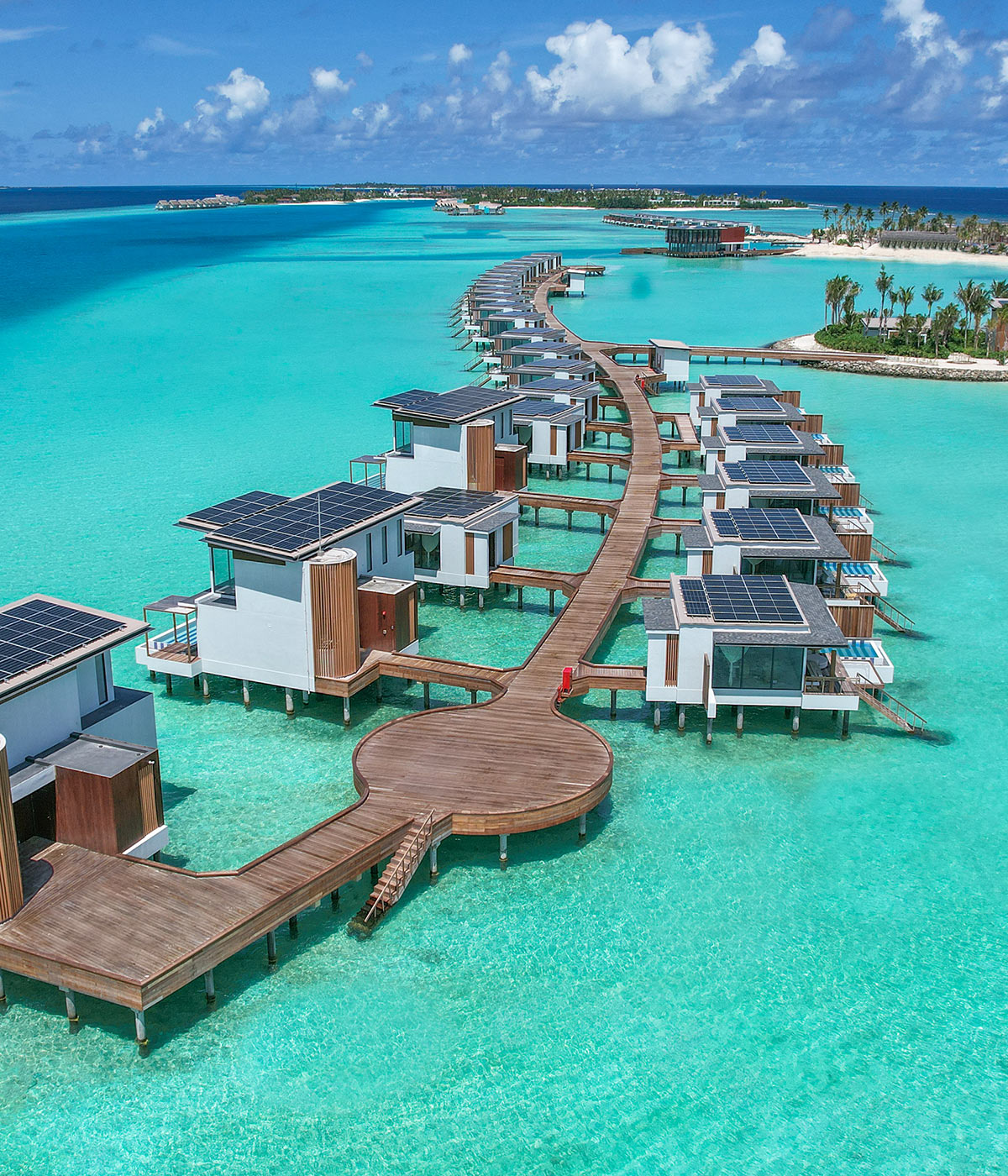
We spoke with Resort Manager Oreste Traetto and Head of Rooms Saifulla Jameel about the initiatives taken at SO/ Maldives. They outlined a number of efforts undertaken at the resort, such as capturing greywater and rainwater, which is then treated and purified to use for irrigation. They also dissolve wet food waste in water to use as a natural fertilizer. The resort supports local fishermen and buys at least five different species of fish from them, along with sourcing whatever fruits and vegetables they can from local growers. This all not only helps the domestic economy; it lowers the carbon footprint for transportation. They even use a high-tech, Dutch-built system of Orbisk analytical machines and software to weigh and evaluate food waste in order to calibrate and correct their production and usage to minimise wastage!
Oreste explained that the resort, which is aiming to be fully Green Globe-certified by October of this year, has a guiding philosophy: “Positive employer, positive planet, positive community, positive business.” This mindset informs their day-to-day activities and guides decisions that they make for their future. “This is key to being sustainable and successful,” he shared. “It’s a team-wide effort which we strive to instil through education. For us, ‘obey’ does not work; ‘explain’ works. If we don’t educate, if we don’t change our mindset, how can we expect to reduce our impact, or to make a positive difference?”

COST MANAGEMENT
The Maldives is, simply put, not a budget destination. Your flight may well be the least expensive part of your holiday, particularly flying direct on AirAsia from Kuala Lumpur, which is incredibly affordable and convenient. Virtually all resorts in the Maldives are priced in U.S. dollars and the ‘plus-plus’ adds an eye-popping 26% to the bottom line. There’s even a third ‘plus’ – a ‘green fee’ imposed by many resorts.
The best way to reduce costs is to avoid high and peak seasons, of course, which is around November to March. Visiting during the shoulder season sees notably lower room rates, and low season (roughly May to July or August) gets you the best rates. Villas that go for $1,500-2,000 a night in December can easily be found for half that, or less, during June. Once you’ve selected a resort, shop around at various sites, including the resort’s site itself. They’ll usually be in line with any third-party booking sites, and some are happy to match rates, though this may take an email or phone call. Don’t be too concerned about poor weather if you go outside of high season months. During our late April visit, shoulder season, it only rained twice in five full days, both times at night.
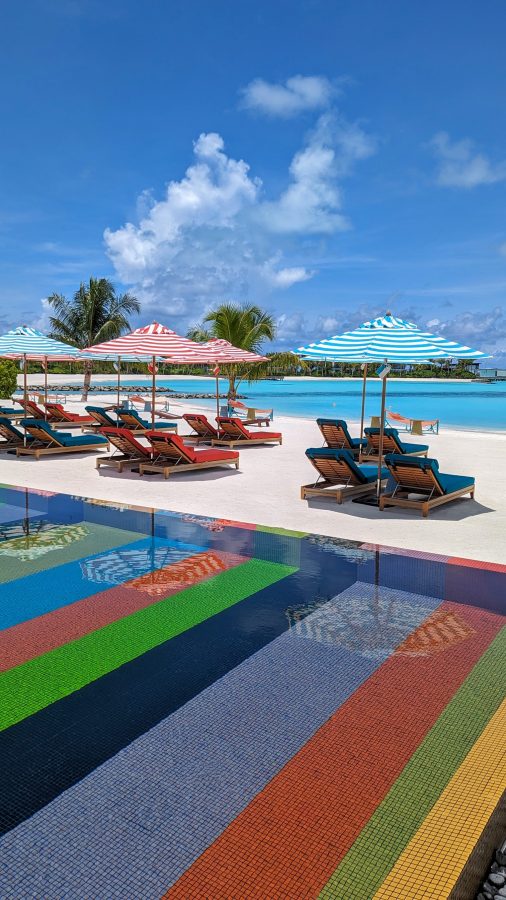
Consider full-board or even all-inclusive packages if they are available. Like the rooms themselves, food is also priced in USD, and the ringgit’s woeful exchange rate means the receipt for even a simple lunch for two will drop your jaw, especially if you have a glass of wine or beer. Packages that include meals help you dodge the sticker shock. Some resorts have add-on beverage packages for alcohol. When we visited, SO/ Maldives did not have an all-inclusive option, though they did say they were looking into it, and had full-board packages on offer. Many of the other guests we spoke with chose to eat a later, hearty breakfast, skip lunch, then have dinner in the early evening.
Alcohol is priced relative to other F&B prices, so it doesn’t look too costly until you add 26% and convert it to ringgit. Like the impeccably prepared and presented food at the resort, the cocktails were picture-perfect and delicious.
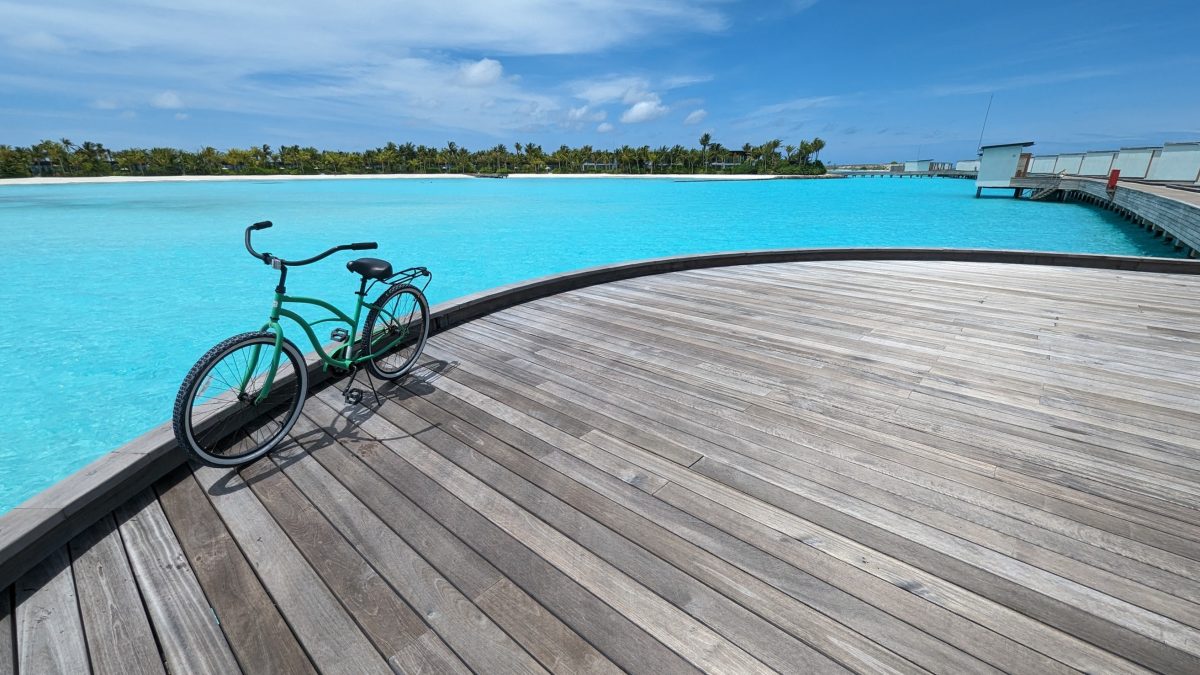
If you choose to visit, the best advice to simply accept that this is an expensive destination, full stop. The scarcity of land, outsize demand, high taxes, and the fact that nearly everything must be imported all contribute to a hefty vacation bill. Accept it all, then put it out of your mind and splash out for what might be a one-time-only dream vacation. No, it’s not cheap, but it’s worth it, and certainly nobody seems to regret going. The stunning shades of endless blue, the idyllic islands at every turn, luxurious retreats with five-star service, sunny tropical warmth, and endless holiday vibes ensure that your time in the Maldives will linger in your memory long after you’ve forgotten what you paid for it.
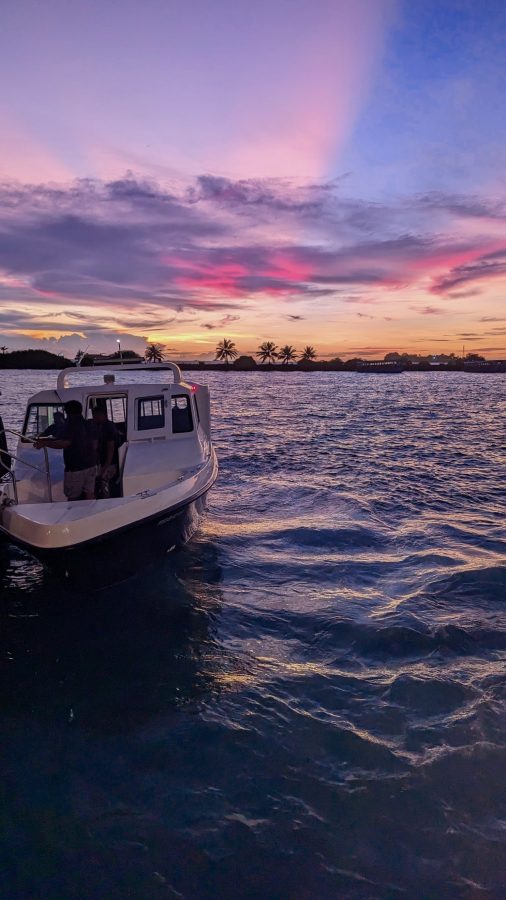
TRAVEL FILE
Getting there
AirAsia flies direct daily from KLIA 2 to Malé. Taking the early morning flight (0835) for the departure, along with the late flight (2110) for the return, ensures that both your first day and last day in the Maldives are full ones. Depending on the season and day, flights can start from under RM900 return.

Prior to your flight, register online using IMUGA, the Maldives’ easy immigration declaration system, to speed your clearance upon arrival. Visit imuga.immigration.gov.mv/ethd.
Stay and Play
Visit so-hotels.com/en/maldives. Off-season (May-September) private villa rates start at $650+++ per night. A compulsory $100 per person speedboat transfer cost (each way) applies. Accor loyalty programme members receive an additional 5% off standard rates.
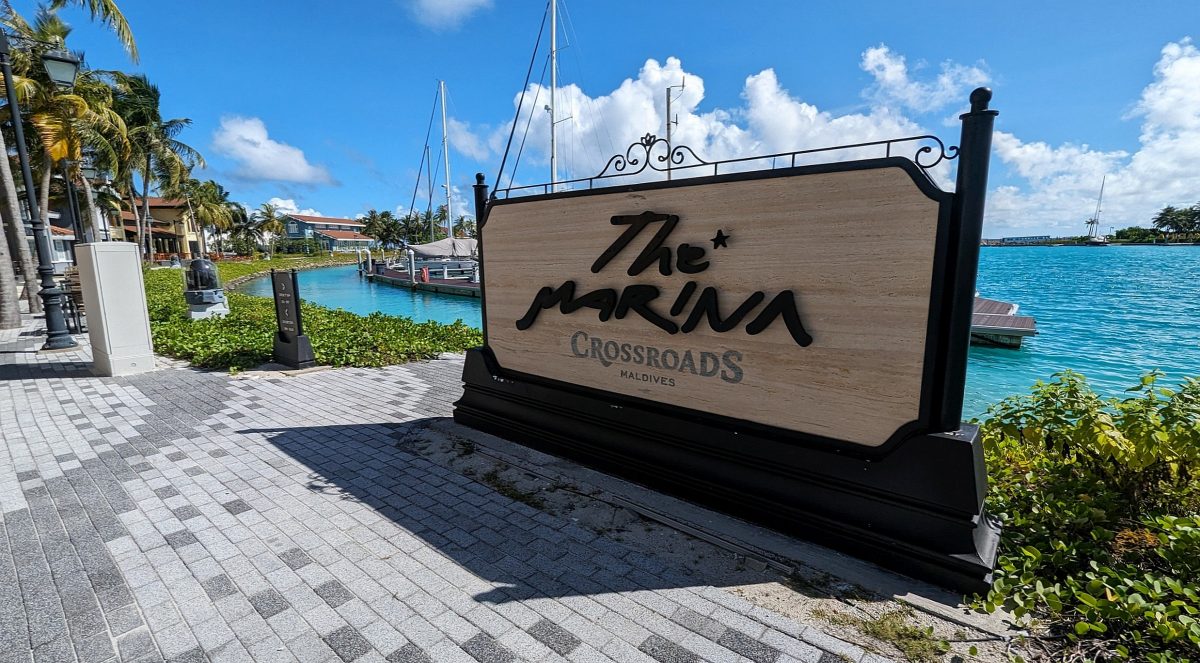
Crossroads Maldives is an integrated tourist destination, of which SO/ Maldives is a part. To learn more about Crossroads and its many shopping, dining, and excursion options, visit crossroadsmaldives.com.
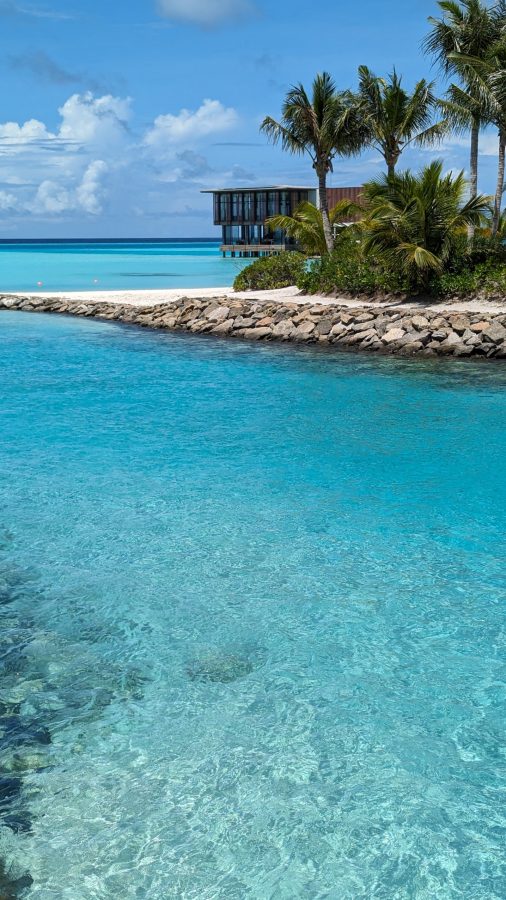
A note about the photos: Unless otherwise stated, all photos were taken by the author with a Google Pixel 7 Pro and not colour-edited in any way.
"ExpatGo welcomes and encourages comments, input, and divergent opinions. However, we kindly request that you use suitable language in your comments, and refrain from any sort of personal attack, hate speech, or disparaging rhetoric. Comments not in line with this are subject to removal from the site. "



















